Paris City Guide
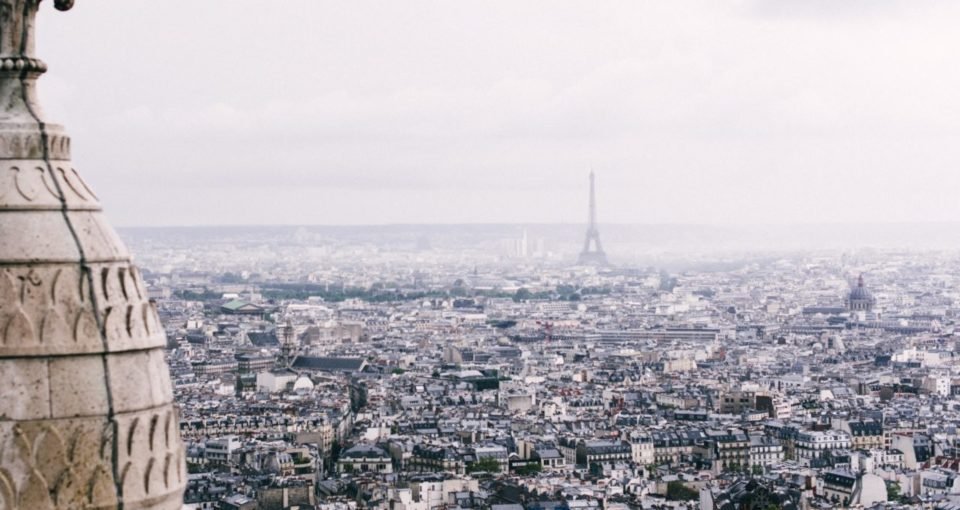
Once the centre of world commerce and politics, Paris has been through most stages of modern state-making. In the space of 100 years from the French Revolution, monarchy changed hands to Napoleon’s French Empire, before monarchy returned, soon replaced by the Second Republic, then the Second Empire. Three republics followed from 1870, with the current Fifth Republic commenced from 1958, headed up by Charles de Gaulle. Throughout these changes, Paris has remained France’s political and economic capital, a centrism that Baron von Hausmann used to justify the concentric arrangement of Paris from the mid-19th century. The city’s canals, boulevards and parks continue to provide infrastructure for cavalier Tour de France cyclists, city runners and enlightened swimmers, all within the surroundings of imperial decadence.
To make the most of this Paris city guide for endurance athletes, note a few patterns and features. Facilities are broken into categories according to their running, cycling or swimming focus, with a separate section highlighting quality gym facilities in Paris. Exact hours aren’t indicated unless very restrictive, and prices are also omitted in the knowledge that no listed facility charges more than €20 for day access. Instead, a full directory of telephone numbers is provided in the final Directory section, so you can call ahead to confirm your intended training time. The place names in Directory link directly to the venue’s Google Maps profile – click on the venue’s name to generate directions. Finally, the Sleeping & Eating section towards the end of the guide provides an insight into good places for sleeping and fuelling during your time in Paris.
Orientation & Logistics
The modernisation of Paris was largely steered during the mid-19th century by Georges-Eugène Hausmann, Emperor Napoleon III’s prefect of the Seine. Hausmann extended the arrondissements system to segment the city into 20 sections, orientated in a spiral system. The wide boulevards that traverse the city were Hausmann’s design, networks that were connected by squares and fountains, mirrored below ground by an advanced system for sewage and water.
The horseshoe-shaped River Seine breaks up the orderly lines of city planners, roughly dividing the city from east to west. Montmartre and Sacre Coeur occupy the high ground of Paris’ north, with Notre-Dame marking a convenient central point for Paris, nearly two miles to the south. The trendy quarters of Le Marais reaching out to the north-east of Notre-Dame, across the 3rd and 4th arrondissements. Bastille is due east while in the westerly direction, Place du Concorde, the Champs-Élysées and Arc de Triomphe form their own axis. From there, hop over the river to the south and you’re at Le Tour Eiffel, one mile west of Saint-Germain, which is roughly adjacent to Notre-Dame.
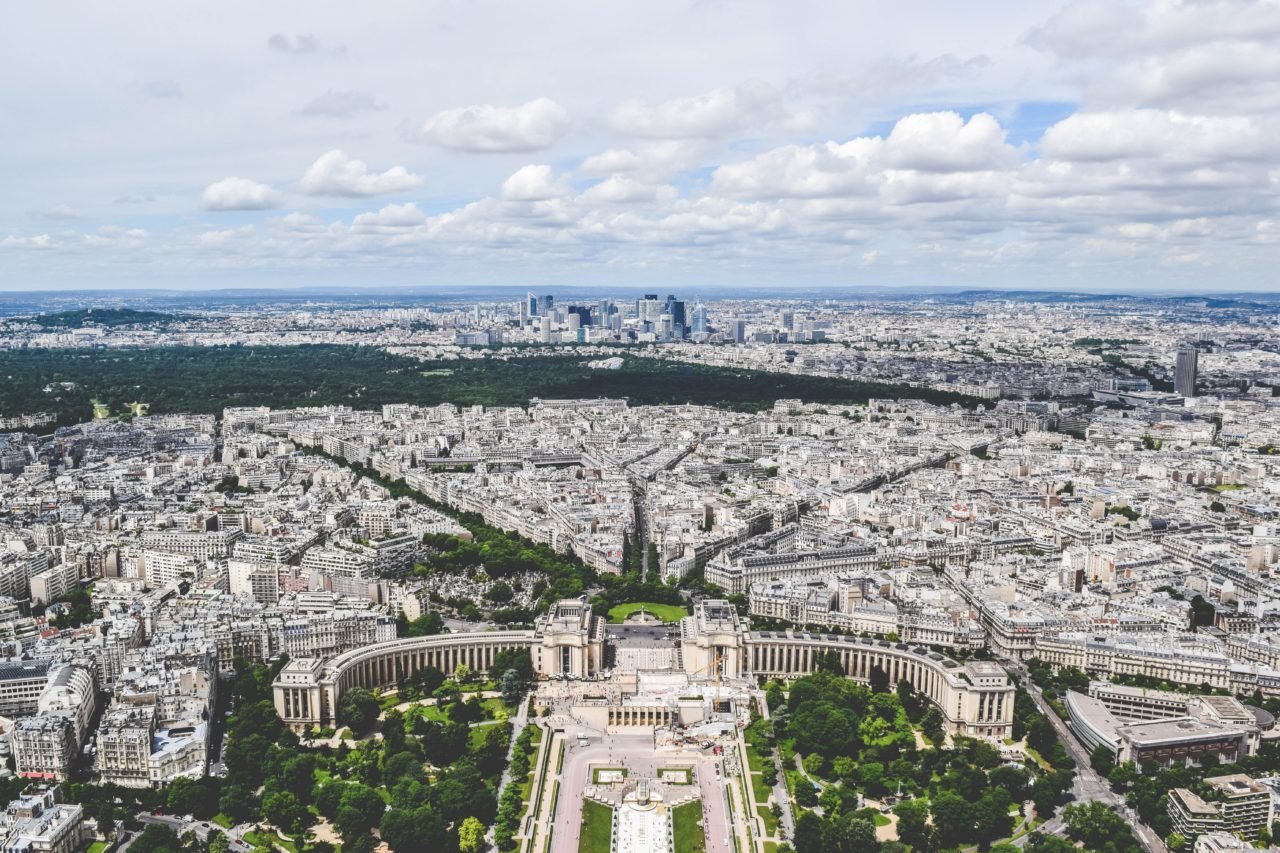
Paris’ inner city transit is reliable and efficient, with numbered lines and titled stops on both the RER and metro services. Stations are gated, requiring authorisation on entry and non-swipe walkouts on exit. A Navigo card would be worth getting hold of on arrival were it not for the fact that it is valid for the actual week (Monday to Friday), not the forthcoming days. An easier ticket type are the multi-day Mobilis tickets which allow you to select your day quota (consecutive days). Alternatively, buy a stack of single-journey carnets, using one each time you enter the transit system.
A northerly latitude furnishes the French capital with adequate weather for year-round training outdoors. Snow doesn’t settle on the streets in winter, and summers are warm but not hot. Sunrise is at 8:40am on December 21, with the sun setting at 4:56pm. On the summer solstice, the sun rises at an early 5:47am, setting at 9:58pm. Though Paris doesn’t receive as much rain as the more coastal London and Amsterdam, the city still captures over 25 inches per year, with 25mm descending during winter months and 15mm per month during summer.
Running
The Seine’s broad meander provides a popular running thoroughfare for Paris, with either bank layered with a patchwork of manicured gardens and two larger parkland areas for running. The northern portion of Montmartre offers some adequate aspect for hill intervals. Hausmann clearly didn’t allow enough vacant lots for athletic tracks, since there is only one in the town centre while others hoops have been tossed to the city’s outer limits.

A 400m running track at Porte de la Chapelle is one option for those prepared to travel north and reach Stadium and Gymnasium Fillettes where there is a 4G football field within the track. The track’s surface is in good condition and a grandstand does offer shelter should you be discouraged to make the journey north in dubious weather conditions. Bring cash for entry, though the turnstile isn’t always monitored for access. An alternative to Gymnasium Fillettes is a more central, 350m track that falls within the shadow of the Eiffel Tower,
For long runs, the banks of the Seine offer some linear routes, but the best place for uninterrupted routes is Bois de Boulogne to the west of Paris. There you’ll find a 3.5km loop around the racecourse, as well as ample tarmac to thread loops throughout the park. On the other side of town is Bois de Vincennes which is also expansive, where a circumnavigation of Lac Daumesnil offers a 1.9km route to match Lac des Minimes, located on the opposite side of the park.
Stretches of waterway funnel runners across Paris in all directions. The newest option is Les Berges on the south bank, a recently updated 3km portion of the river that is open to pedestrians only. From the border of Le Marais, head to Canal Saint-Martin and continue north as far as you want, passing through through La Villette. Another piece of runner-friendly infrastructure is Promenade Plantée, a thread of raised parkland on former railway line, starting east of Opera Bastille and continuing for 4.6km. Though Promenade Plantée ends at Boulevard Périphérique, running at street level for half a mile connects you with Bois de Vincennes for more liberal outings.
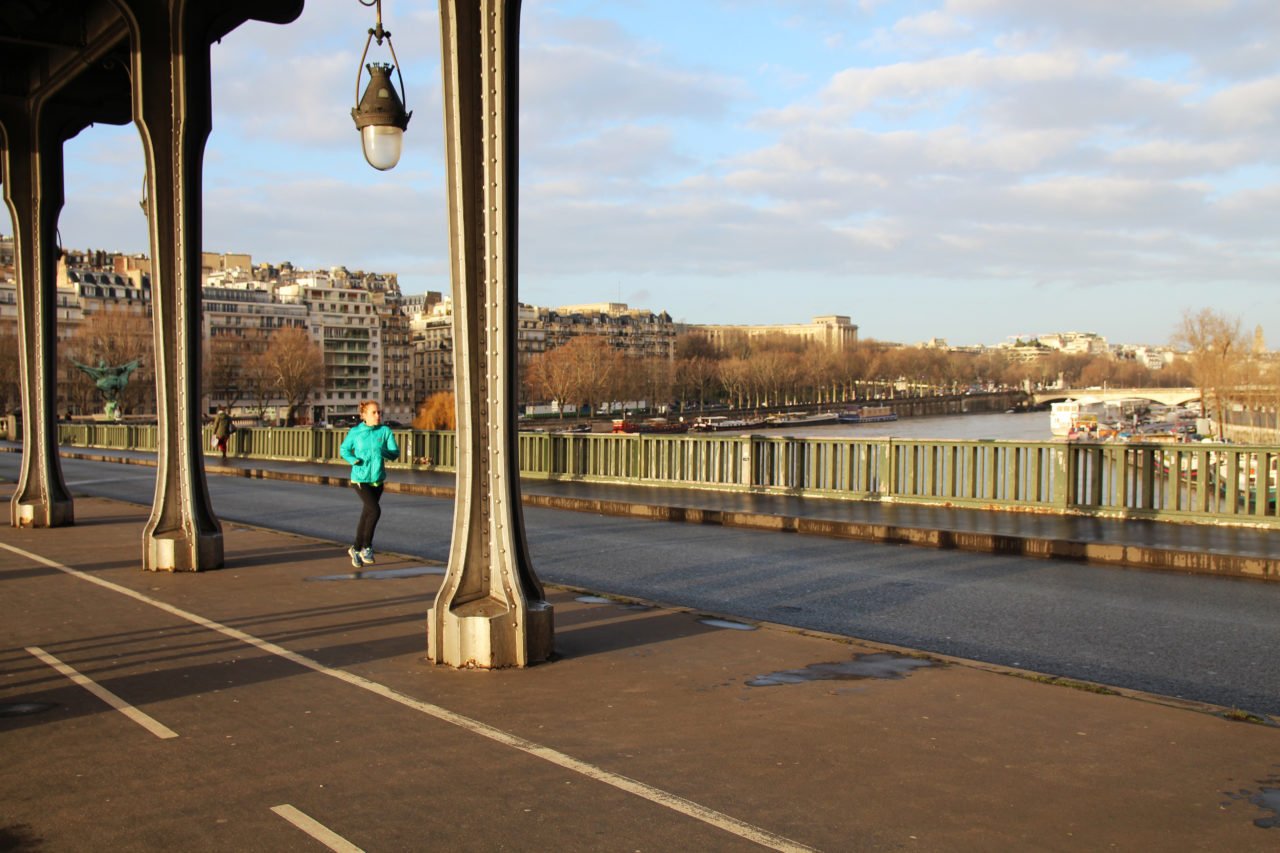
Shorter runs or half-mile / full-mile intervals can be completed within Paris’ smaller parks, namely Luxembourg, Bastille, Invalides, Tuileries and the park surrounding the Eiffel Tower, Champ de Mars. Though these impressive gardens offer solid surface away from traffic, they do get busy from lunchtime onwards, especially in the summer. Jardin du Luxembourg has a 1.9km segment with smooth bends, while Bastille’s circumnavigation includes a 1.4km loop, sliding via Jardin de l’Arsenal. Tuileries (Louvre) and Champ de Mars present busier tourist areas, but still useful for intervals and sprints.
When it comes to finding hill repeats for runners, Paris doesn’t deliver too well. The high patch of ground around Montmartre is the most localised elevated area, but lanes are narrow and roadways are frequently broken. You will be able to get your intervals in, but try to go before 9am and have a sense for the kind of grade you’ll looking for – you can do up to 10% for over 100m, or gentler. The good news is there is a solid chunk of stairs alongside the funicular heading uphill away from the town centre (to the north). A silver lining, of sorts. For a measured anti-clockwise 2.2km loop with some undulation, head to Buttes Chaumont – a fast effort would be just over eight minutes, so use this as a yardstick for continuous loops or broken intervals.
Germany’s adidas have been making short work of Paris’ streets, trampling along rues, down boulevards and across ponts with a number of social and highly local running groups. The overall adidas Running Paris group has over 5000 members on Facebook, so look to drop down a level and find the group that sets out nearest to your accommodation. They are at Bastille (Facebook / Strava), Champs-Élysées (Facebook / Strava), Bir Hakeim (Facebook / Strava) and Odéon (Facebook / Strava).
Cycling
Though Paris’ flat terrain is never going to compare with climbs within the likes of San Francisco and Cape Town, wonderful tarmac and quintessential French villages aren’t far from town. Within the city limits, cyclists have to put up with the same terrain that runners use, with some specialisations for route directions. Based on their greater range, cyclists can break out of town and find worthwhile hills for repeats, so interval training isn’t completely out of reach.
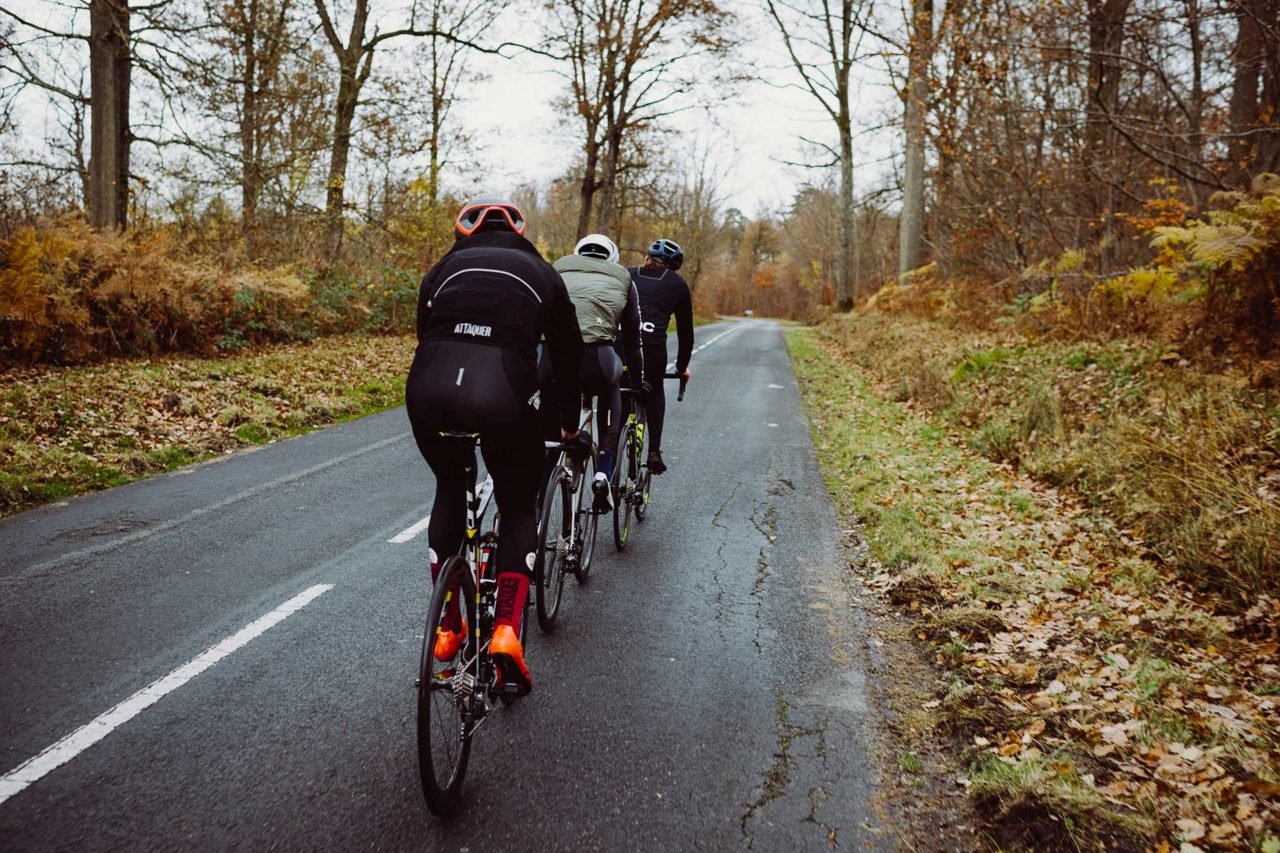
Like Manhattan and London, Paris has developed its own circular, single-direction routes for cyclists. Though smaller than Central Park and Regent’s Park, the Hippodrome’s 3.6km clockwise loop in Bois de Boulogne has a consistent flow of cyclists pushing a good pace. Zero hills and an oval loop reduce the slowing and turning variables, such that the Hippodrome works out like an enlarged velodrome. On the other side of town, the 3.1km triangular clockwise loop in Bois de Vincennes has sections for cyclists and runners.
The roads around Montmartre are too intricate for hill intervals on the bike, so head west to the ridgeline overlooking Paris for some resistance. Mont Valérien offers one knoll, home to a fort by the same name. An 800m climb heads up at 8% gradient, but it does cross tracks so you’ll need to time your ascent from the D3’s intersection with Rue Carnot. Alternatively, climb the rise to the south, a 1.1km climb up to Montée Suresnes.
Longer routes out of Paris are found in all directions, with a higher patch of land located on the city’s western frontier, and the lower land saddling the Seine and Marne rivers falling to the south-east. Passing through Bois de Boulogne, this 90km loop includes enough elevation and perspective to get a feel for the city – an ideal first ride if you’re up to the distance. Alternatively, a shorter, 60km loop takes you along the Marne, so a flatter route with a kicker at the turnaround (Côte Casenave). Taking the train out of town to get to rides is always possible – just note that bikes are only allowed on RER trains.
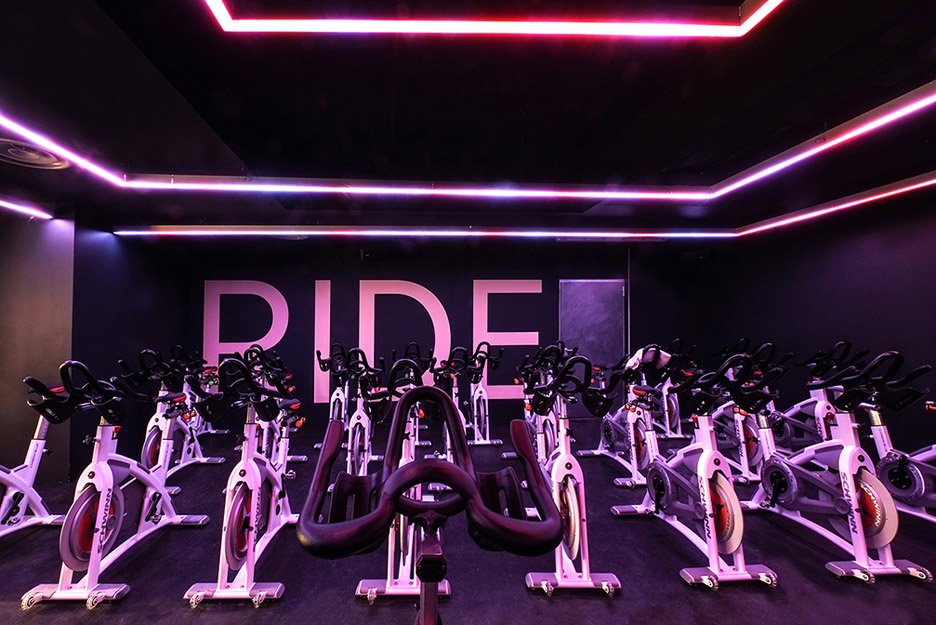
Dynamo Cycling have established the best footprint for indoor cycling and recently acquired a competitor, Let’s Ride, to extend venues into four neighbourhoods in Paris. The indoor cycling studios have made no attempt to distinguish themselves from other revolutionary gym-studios like Flywheel or SoulCycle, meaning they combine loud music and neon lighting with the commendable footnote of clipped-in riding. Their spinning bikes are made by Schwinn, and LOOK cleats are fixed to each ride.
Getting hold of a carbon road bike rental in Paris is best done through Sam Weaver of Paris Bike Co. (PBC). Collecting and pick-up of bikes can be handled by PBC at an extra cost, or else make a trip to 29 rue Victor Hugo (14th Arr.) to collect. Multi-day prices scale very well, practically offering a substitute for using public transit or Velib, and Sam can also arrange for guided riding in the countryside surrounding Paris. Riding with Steel Cyclewear & Cafe is another option for social rides. They are very friendly and can always recommend you to other individuals to if groups aren’t scheduled.
Swimming
Imperial grandeur is on display at a number of French swimming pools, with more recent developments built to meet the demand. The trouble is, many of the best looking pools in Paris are removed from the city centre. That said, the practical 50m tub at Piscine Berlioux is an excellent facility around the corner from Le Louvre. Alternatively, the south side of the Seine is home to Le Quartier de Sport and the 33m La Piscine Pontoise where you can find quieter lanes during late-night hours. Located at the western outskirts of town on Île de Puteuax is an excellent 50m outdoor pool, Piscine du Palais des Sports de Puteaux, open from June to September.
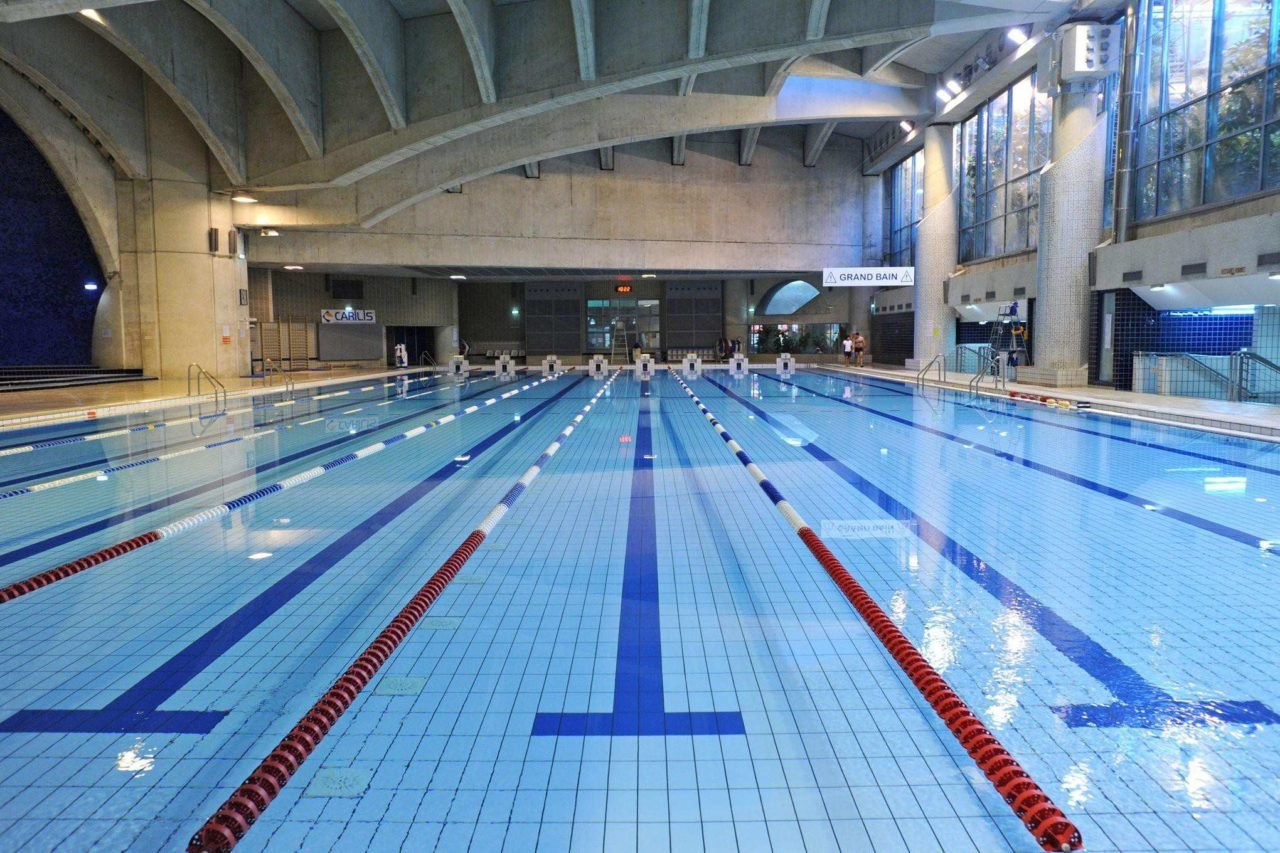
The revival of urbanism has seeped its way into the Seine, with canals and the main river now being clean enough for swimming, on occasion. La Villette canal basin in the 19th arrondissement uses the waterway to form three swimming areas, the largest offering a 25m length [note summer closure due to bloom]. Another ambitious utilisation of the Seine’s space with separated pool water is the Joséphine Baker Pool, which is a hollowed 25m x 10m barge, located on the shoulder of the 13th arrondissement. For more details on urban swimming in Paris, take a look at Laboratory of Urban Swimming (Laboratoire Des Baignades Urbaines, Twitter, Instagram, no website).
Beyond Paris’ city limits is an open water lake for swimming, Île de loisirs de Créteil (39 minutes on RER from Châtelet Les Halles), as well as another, less busy 50m pool, Piscine Montbauron, which could be convenient if you hope to visit Versailles.
Gym
Paris’ gyms have no real concentration in any particular area, and have welcomed the gradual penetration of CrossFit boxes to the city. Drop-in culture across Paris fitness areas varies, with only a few allowing for pay-as-you-go guest visits. The most welcoming is R2, who have two venues in Paris and a spread of classes throughout the day, neatly broken by open gyms and runs. R2’s gyms have showers, in case you want to visit outside of access to your accommodation.
There is no convention in Paris for hotels to include fitness facilities, so make a note of the following facilities in relation to hotels mentioned in the Sleeping & Eating section below. Guests of The Hoxton can use the CMG Club, Grands Boulevard for €14 per entrance. Half a kilometre from Le Pigalle is Neoness at 44 Rue de Clichy and Mama Shelter, which has a CMG Club, Bagnolet 200m from its entrance, at 65 Rue de Bagnole.
Sleeping & Eating
Parisians have established a fine art for identifying the arrondissements most suited to them. For visitors, the easiest way to decide on accommodation in Paris is to look for proximity to your main attractions. Staying in Le Marais works well for all its charm, but for those looking for long runs or swimming pools, other quarters can be sought. Despite Paris’ renowned reputation, or rather because of it, efforts towards healthy food have been slow to progress – a workable problem.
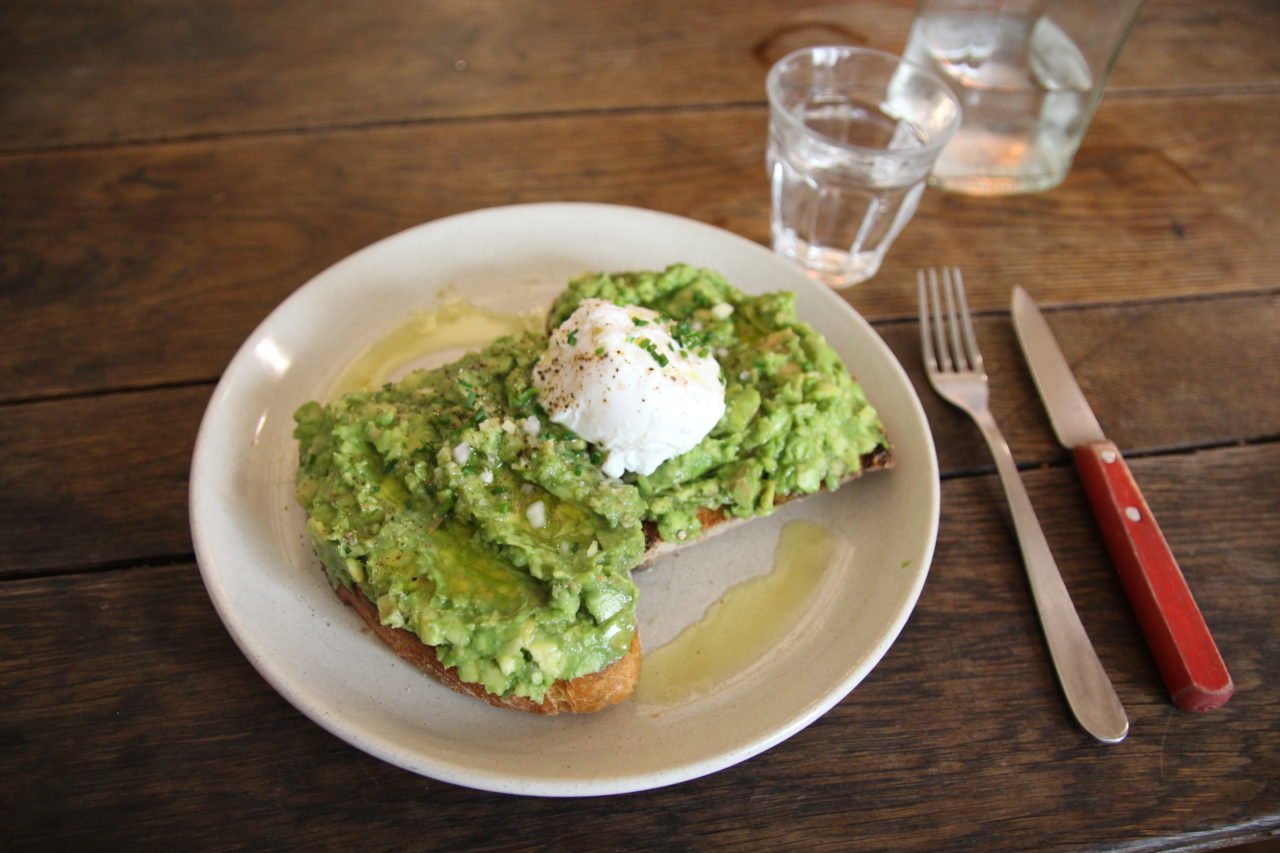
Parisiens aren’t known for devouring hearty portions, but rather odd delicacies, many of which remain popular in France alone. Of course signature dishes are worth sampling, but if you want to stay in the safezone of an international palette with an above-average caloric density, look out for the following:
On the northern fringe of Le Marais is Loving Hut, not the smartest venue but one of Paris’ more interesting vegan restaurants, with phở soup, tofu and veggie-burgers all on the menu. Another vegan restaurant, Wild & the Moon, is also in the area, contributing a broader menu that Loving Hut. Australia’s most famous TV show has influenced the naming of an all-day restaurant on the other side of the road from Loving Hut, Neighbours. Expect all your favourite dishes from down under, and note this punchy statement pointing the venue’s high regard for its coffee:
What if we told you this is the truth? And that the coffee available in almost every cafe in France has little to do with the quality of coffee. That it is based on the cheapest price possible and roasted in such a way to hide the poor quality of the beans. So much so that coffee becomes a homogenised favour (sic) that has nothing to do with terroir, the farmer, or the barista’s skills. It is accepted to be bitter, insipid and requires a dose of sugar just to make it drinkable.
Between the 9th and 10th, find Yafo who place an emphasis on humous salad and fresh vegetables. Three blocks from them are L’Office and Richer, a pair of restaurants that serve more traditionally French dishes but with healthy, fresh ingredients. Kunitoraya is your Japanese in the 1st, next to Palais-Royal, and Holybelly in the southern half of the 10th is excellent for brunch. For quinoa, Thai or salmon salad bowls, head to Season in the 3rd, and maybe grab a açai bowl to-go.
A spread of cafes challenging Neighbours’ claim can be found around Le Marais, including a number of cycling themed varieties and cosy venues to write home about. KB Coffee Roasters (9th Arr.), Café Craft (10th Arr.), Ten Belles (10th Arr.), Fragments (Le Marais), Boot Café (Le Marais), Matamata Coffee (2nd Arr.), Fondation and Loustic (3rd Arr.), KB CaféShop (9th / Pigalle) and Coutume (7th Arr.). Cycle cafes include Steel Cyclewear & Cafe and Le Peloton, the former being the best spot for a couple of hours on the laptop if you’re hot-desking (Café Craft next). If you’re setting out on longer runs and need motivation, select Canal Saint-Martin Pont d’Amélie and the nearby Café Craft or Ten Belles as your departure points.
Most accommodation in Paris is to the north of the Seine, with Le Marais setting a good focal point for tourists and business travellers. Britain’s The Hoxton arrived in Paris in Spring 2017, with 172 rooms spread over four floors. Room types of “Shoebox”, “Cosy”, “Roomy” and “Biggy” have made it across the Channel, each updating the 18th century building with mid-century flare. The Hoxton’s location to the north-west of Le Marais places it very well for popping out to grab food, but the hotel also has its own restaurant at ground level, with a menu unashamedly insulated from typical carb-heavy meals of the la Ville Lumière.
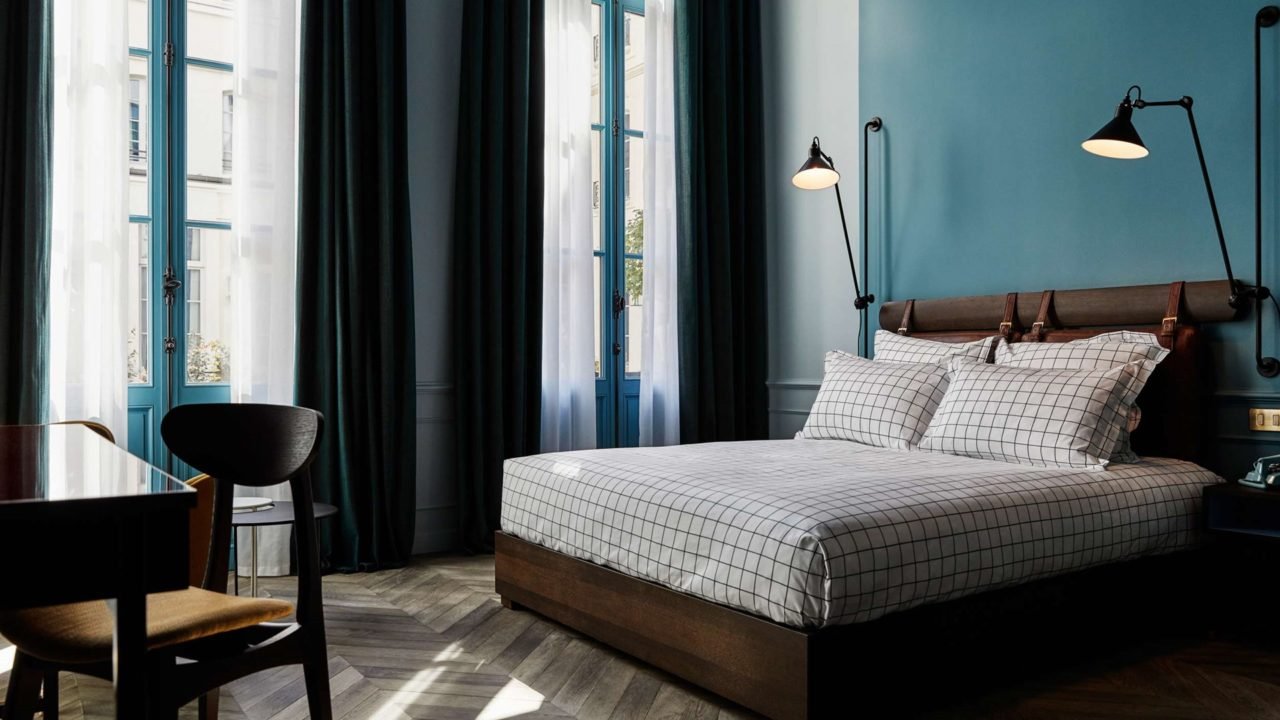
Half a mile away is Le Pigalle, on the south side of Montmartre, so a good gateway for runners looking at morning hill intervals before the crowds. Their rooms are similarly priced and sized up like The Hoxton (a 12m2 room is their Shoebox equivalent), and Le Pigalle also serve food throughout the day at their in-house restaurant. Owing to their location in the entertainment hub, Le Pigalle embraces the red-lighted heritage of the neighbourhood by welcoming DJs on weekends. Something to consider when requesting one of their 40 bedrooms.
A third and final hotel recommendation in Paris would be Mama Shelter, a global group of hotels who call the city their home. Their more affordable hotel is located on the East side of Paris, hardly inconvenient and half a mile from Centre Sportif Louis Lumiere – a 400m track which is free to members of the public. The 25m Piscine Georges Rigal is also near to Mama Shelter Paris East. Their 15m2 “Small Mamas” cater to a solo traveller’s budget, and the in-house restaurant provides sufficient healthy dining options if you’re concerned about the distance from Paris’ renowned culinary quarters.
Directory
Coutume Café: +33 1 45 51 50 47
Dynamo Cycling, 1st Arr.: no number
Fondation Café: no number
Hoxton, The: +33 1 85 65 75 00
Joséphine Baker Pool: +33 1 56 61 96 50
Mama Shelter Paris East: +33 1 43 48 48 48
Matamata Coffee: +33 1 71 39 44 58
Neonness: no number
Peloton, Le: +33 6 24 58 02 15
Pigalle, Le: +33 1 48 78 37 14
Piscine Montbauron: +33 1 39 24 83 15
R2 Bastille: +33 1 48 07 36 44
KB CaféShop: +33 1 56 92 12 41
Steel Cyclewear & Coffee Shop: +33 6 47 58 32 46
Wild & The Moon: +33 1 86 95 40 44
Yafo: no number
Email Will Ross (will@zafiri.com) with questions or comments, and have a browse of other Zafiri City Guides.